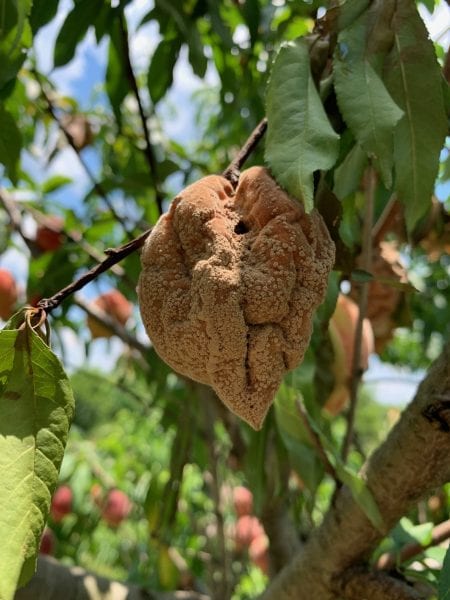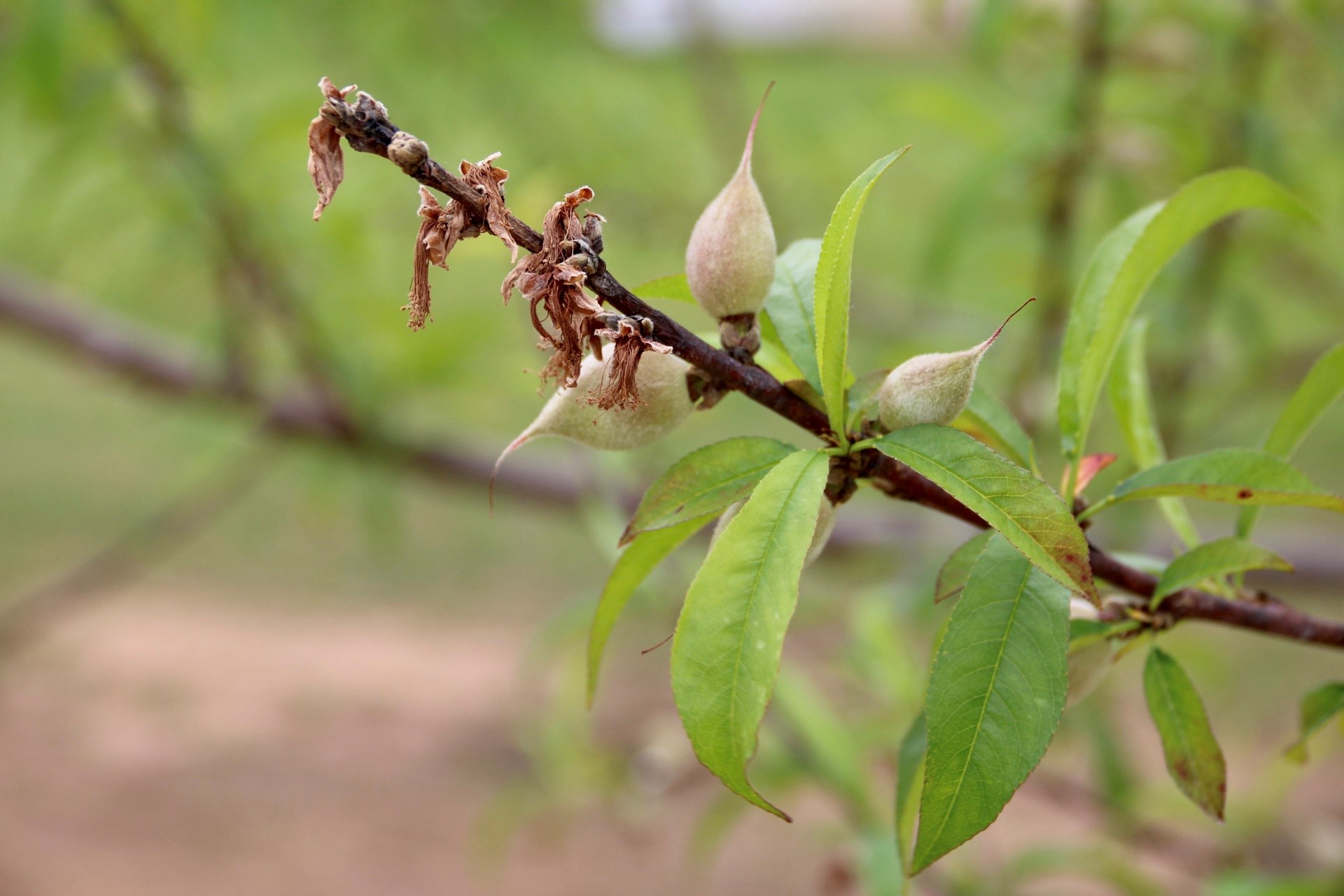Crop Production

Two common plant diseases may be appearing in peach trees right now, causing twig dieback. Determining which disease is present can often be difficult. Bacterial blight, also known as bacterial twig blight or dieback, and blossom blight, also known as brown rot, are active every spring.
Symptoms
Symptoms of both diseases appear as an early collapse of flowers that turn brown and become somewhat glued to the twig in a gummy ooze. Symptoms continue to progress as a twig dieback where the affected leaves dry up and cling to the branch. Cankers develop at the base of flower and leaf buds. Gum often exudes from these cankers especially in the spring.
If blossom blight is the cause, then spores of the fungus will appear as a dull gray to brown mass on dead flowers during wet weather. If fungal spores are visible, you definitely have blossom blight. However, if spores are lacking, then diagnosing which disease is present becomes much more complicated often requiring a trip to a plant diagnostic lab for confirmation.
 Weather conditions often dictate which disease is more prevalent. Bacterial blight is more common in cool, wet weather and blossom blight prefers warm, moist weather. This year, Alabama has experienced little of both of these conditions. Trees growing under stressful conditions are also more susceptible to both diseases.
Weather conditions often dictate which disease is more prevalent. Bacterial blight is more common in cool, wet weather and blossom blight prefers warm, moist weather. This year, Alabama has experienced little of both of these conditions. Trees growing under stressful conditions are also more susceptible to both diseases.
Management
Management begins with removing and destroying infected twigs and branches in the summer. Prune out affected tissue during dry weather to avoid spreading bacterial blight, blossom blight or any other pathogen. Disinfect pruners between trees by soaking them in a 70 percent alcohol solution or in 10 percent bleach solution.
Blossom blight can lead to fruit rot, known as brown rot, later in the season. Growers need to remove and destroy all affected fruit that drop to the ground, as well as mummified fruit that cling to the tree. These shrunken, grayish-brown fruit can be covered with fungal spores. If affected fruit are allowed to remain, spores can spread to healthy fruit in the summer prior to harvest or during the post-harvest period. Try to avoid wounding fruit and cool harvested fruit as soon as possible.

